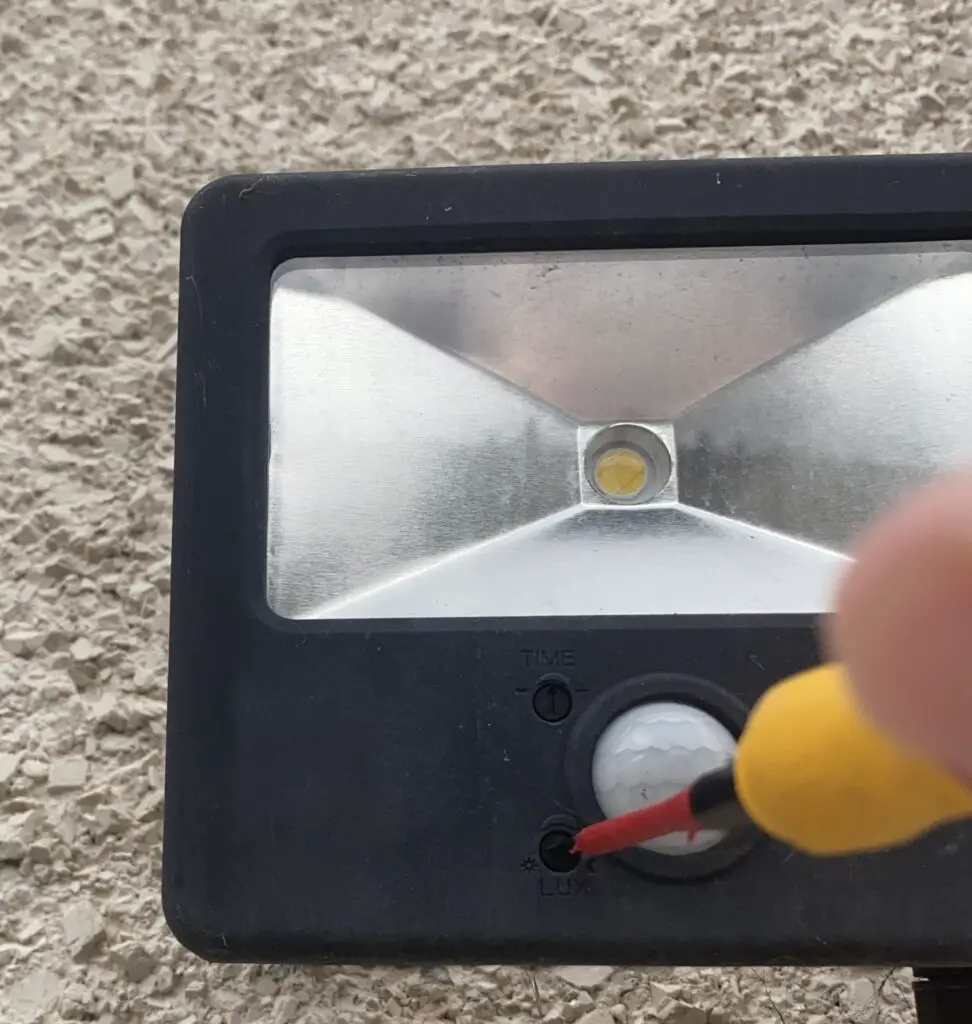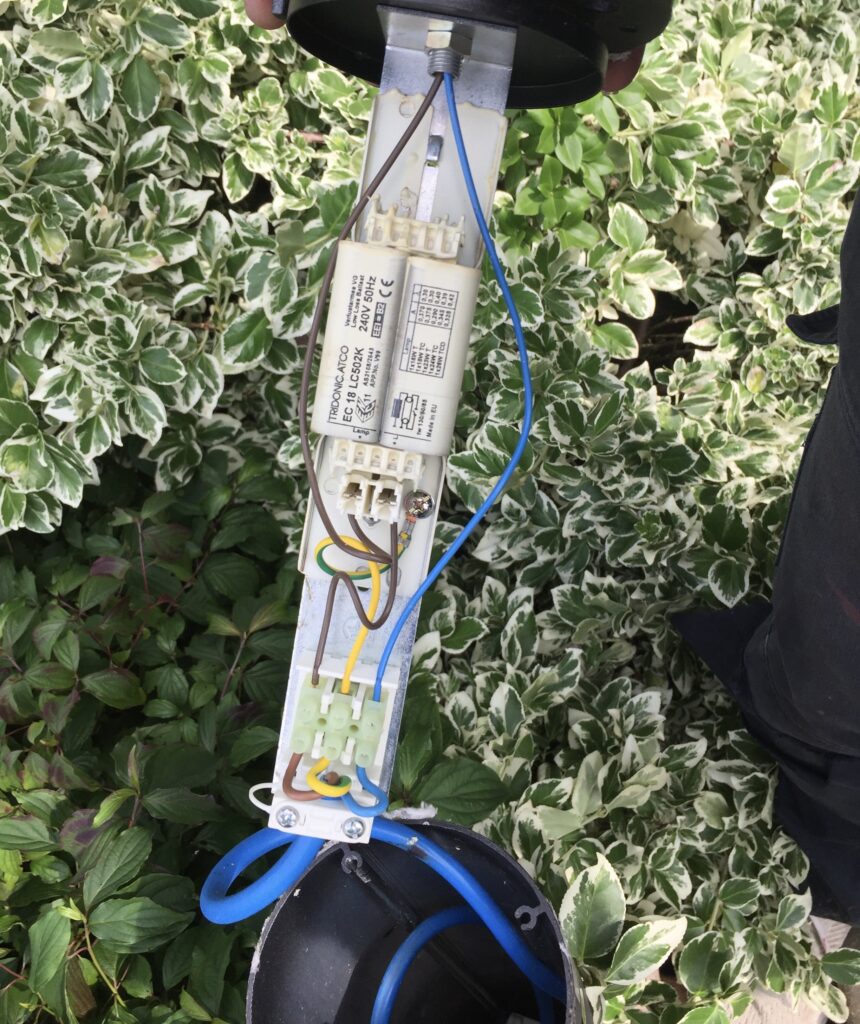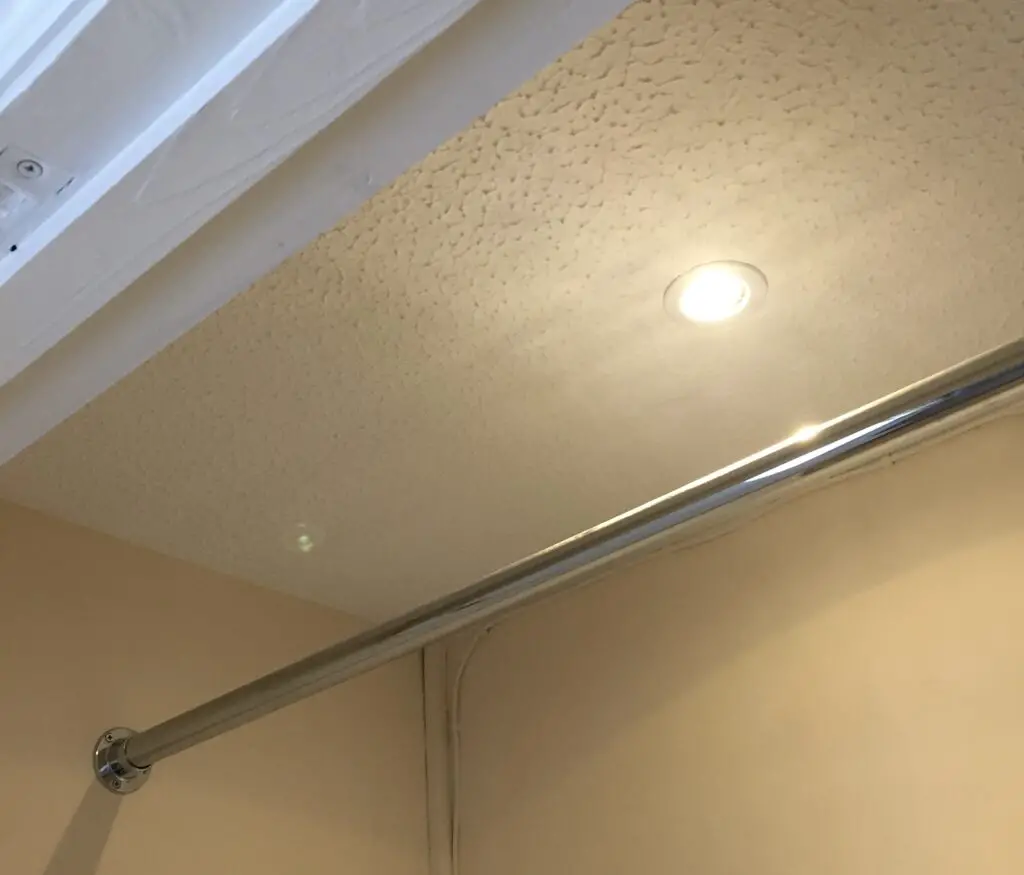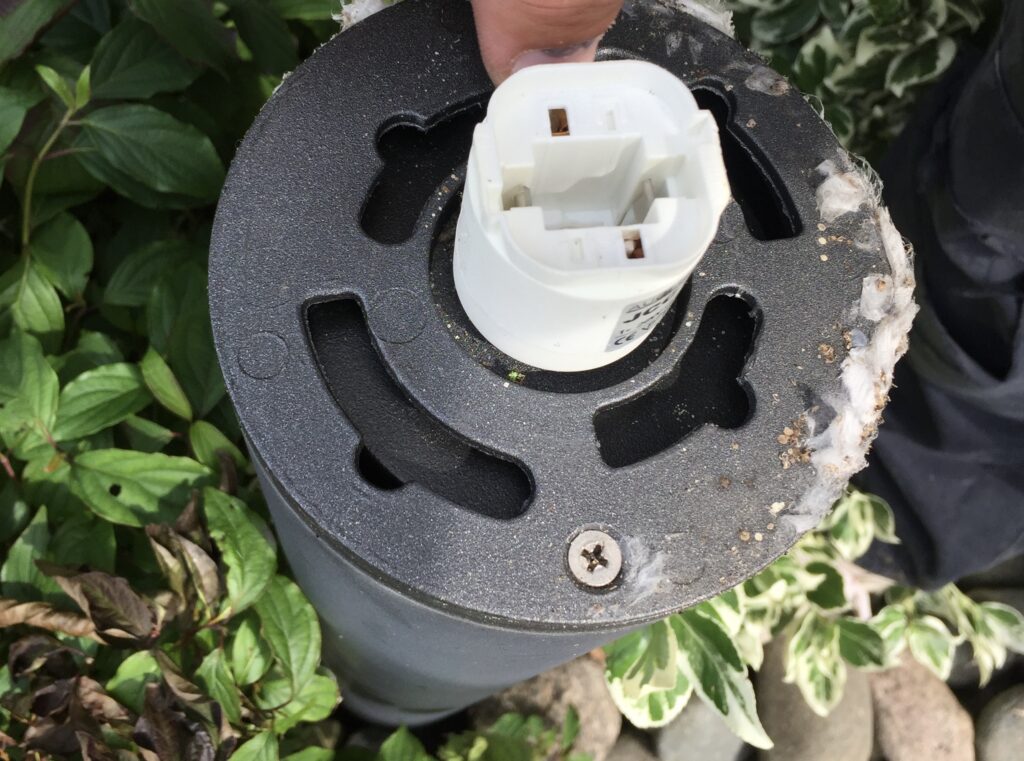Motion sensor lights are great at providing a convenient and energy-efficient method of controlling our lighting. Especially in the wintertime, it is always a welcome relief to arrive home after a day of work and as I bring my bike up the garden path the exterior light automatically turns on to help me navigate the way.
This is the theory anyway, but in my experience as an electrician, whilst the positives are great, motion sensor lighting is a real nuisance when it goes wrong. A common complaint from customers is that their motion sensor light is staying on. Fortunately, there are many simple methods we can try at home to solve the problem before an electrician needs to be called to investigate.

If a motion sensor-controlled light is staying on then cleaning the sensor and adjusting the settings are often all that is needed to fix the issue. However, is worth checking some of these other common causes to ensure the fix is permanent.
In my experience as an electrician, cleaning the motion sensor is one of the simplest and best ways to solve the problem of a motion sensor-controlled light that won’t turn off. Often insects, such as spiders, like to make the sensors their home, and their webs and debris interfere with the sensitive electronics of the sensor. That being said, there are a few other common issues worth double-checking, especially whilst you have the ladder out investigating!
Understanding How Motion Sensor Lights Work
I feel like we should briefly touch on how motion sensor lighting works, as the type of sensor you have will have an impact on what is the most likely cause. There are three main types of motion sensors.
Infrared Sensor (Known as PIR or Passive Infrared Sensor)
These are perhaps the most common type of motion sensors used to control lighting. Infrared sensors are able to detect changes in the infrared radiation emitted by warm bodies.
It’s strange to think of, but all warm bodies, including humans, emit infrared radiation. This means that when a warm body passes through the detection zone of the sensor, the pyroelectric sensor can detect the change in the amount of infrared radiation. On cue, it passes the signal to the circuit board which activates the light.
Microwave Sensors
Microwave sensors are becoming more common to control lighting, especially in commercial premises. Although they are a higher-end product, the price is reducing to levels that make them an easier choice for all consumers, such as this one on Amazon as an example.
Microwave sensors are more sensitive than infrared as they detect movement using microwave radiation. These sensors emit low-level microwave signals and measure the time it takes for the signals to reflect off of nearby objects and return to the sensor. When a person or object moves within the detection area of the sensor, the microwave signals are disrupted and the sensor detects the movement.
Ultrasonic Sensors
Ultrasonic sensors are a lot less common in lighting situations. As an electrician, I can’t recall a time I have fitted an ultrasonic sensor to a lighting system. They are more commonly used in security applications and built into things such as car parking sensors.
These sensors work by emitting high-frequency sound waves at a range that is above the range of human hearing, typically in the range of 20 to 40 KHz. The sensor is then able to measure the time it takes for the waves to bounce back and will trigger if it detects the waves have bounced off unfamiliar objects within their detection area.
Photocell Sensors
Most lights will also have a photocell sensor included. It is the photocell that can detect changes in the ambient light levels. This is how the sensor prevents the light from activating during daylight and only triggers when it detects motion at night. There is usually a setting to adjust the ambient light settings (or lux levels) so that the light can be more or less sensitive.

Common Causes of a Motion Sensor Light Staying On
Now we’ve looked at how a motion sensor light works we can have a better idea of what is causing the light to stay on. In my experience, it’s best to start with and rule out the most obvious causes, before progressing to the less likely ones. It always surprises me how often it is the simple solution that fixes the issue when it comes to repairing electrical equipment. If your light is constantly triggering rather than permanently on, this article here will be of use.
Obstructions on the sensor
This is the first common cause to rule out. Obstructions such as dirt, dust, or cobwebs on the sensor can play havoc with the sensitive electrical signals it uses to detect presence. There’s more on correct cleaning and maintenance below as we want to try and avoid the use of harsh cleaning chemicals here.
Incorrect Sensor Settings
If I’m called to look at a sensor-controlled light that is staying on, after cleaning the sensor the next thing I will always do is take a look at the settings. There are different settings on the light responsible for sensitivity, range, daylight levels and timings.
Any of these settings may be set up wrong. I tend to adjust all the settings to as low sensitivity and time as possible to then figure out if the light is activating. By setting the duration timer to the minimum allowed, you can test the light to see if it is switching on and off by itself, diagnosing if the senor is healthy or if there are bigger problems.
Improper Sensor Placement
The sensor being located in the wrong location is my third go-to cause of a light staying on. If the sensor is placed too high it may be picking up neighbours, if it is too low it may be picking up movement on the ground such as rodents or nightlife. Following the manufacturer’s guidance for the correct placement and taking a look at the surrounding area and any potential false triggers is a good place to start.
Extreme Temperature
It’s fair to say I only have a surface-level understanding of how a lighting sensor operates, but like many, I know that electronic circuitry does not like extreme weather conditions. Extremely hot or extremely cold weather conditions can cause the sensor to not operate correctly and stay switched on.
I’d put condensation build-up inside the sensor into this category which is why a sensor that is good quality and sealed properly from outside influences will outlast a cheaper inferior product. Better quality sensors are able to handle weather conditions more effectively.
When buying a light sensor it is worth checking the temperature range that the sensor can operate in. I’ve come across some that only operate up to 25 degrees celsius so are not ideal for use in many places!

Weather Conditions
Weather conditions can often be to blame for a motion sensor light staying on. However, the advantage here is that when poor weather conditions such as heavy rain, snow or high winds cease, the sensor should again operate and turn the light off.
If like me, your outside light is keeping you awake at night when the wind is blowing, adjusting the settings to be less sensitive, usually does the trick and solves the problem.
Power Surges or Fluctuations in the Electrical Supply
These types of faults can be difficult to identify unless you have had a recent storm or a power outage in the building. As motion sensors are sensitive items of electronics, power surges are enough to damage the circuitry. Unfortunately trying to bring the sensor back to life is unlikely, unless you have a passion for electronic-level repair, so replacing the sensor is the simplest and most convenient option.
Faulty Sensor
I’ve put the faulty sensor at the bottom of the list because once we have tried the other more common options, the chances are the sensor has deteriorated over time and is no longer functioning correctly. Replacement of sensors is common, I often end up changing the sensor when I get called to a lighting control fault.
The type of sensor will depend on the light and if it is internal to the light fitting or mounted externally. Either way, trying to get a like-for-like replacement can be difficult and unfortunately changing the whole light fitting can often be the simplest and quickest way to get back up and running again.
I would always advise getting a professional electrician involved when it comes to changing the light or the motion sensor.
Fine-Tuning the Motion Sensor Light: Adjusting the Settings

We mentioned a few times above that changing the settings on the motion sensor is all it usually takes to stop the light from staying on. Depending on the motion sensor or light you have the panel may be located at the bottom, side or back. Sometimes small panels or covers need removing in order to access and often the settings need adjustment by way of a screwdriver, as seen in the photo above.
Most motion sensors have small knobs that can be turned clockwise to increase the setting or counterclockwise to decrease it. Finding the manufacturer’s instructions online is often the quickest and simplest way to figure out which knob does what. I’ll often put the manufacturer and model number into google to get the settings for that light, it is a lot easier than squinting at the tiny writing when halfway up a ladder!
The settings on the sensor will typically allow the user to adjust the sensitivity, range, duration and light levels it will operate under.
Adjust the sensitivity
The sensitivity setting determines how easily the sensor is triggered. If you suspect moving objects such as trees in the wind are triggering the sensor, it’s worth turning this one down.
Adjust the range
Depending on the sensor, higher-end models typically allow users to adjust the range. This determines how far away the sensor can detect movement. Again, picking up movement in neighbours’ gardens etc may be another season the light is staying on.
Adjust the duration
A basic function found on nearly all motion sensors is the ability to adjust the duration. In my experience, this is one of the common settings that is causing the light to stay on. If the duration is set to high, say 60 minutes for example, every time the sensors sees movement the 60-minute timer is reset, resulting in the light never switching off.
Test the Settings
When troubleshooting I’ll typically adjust the duration to be as short as possible and the sensitivity to be as low as possible. This way I can check if the light is switching off, or if it truly is stuck on. If the light switches off, I can then go in and fine-tune the settings.
If the motion sensor doesn’t turn the light off even at the shortest duration and lowest sensitivity, chances are the sensor is going to need replacing.

Keeping Your Motion Sensor Light in Top Condition: How to Inspect and Clean the Sensor and Light
Maintenance is always better than repair, and by looking after the motion sensor we can hopefully get a longer life span out of it. To be fair to the poor motion sensor I am always impressed at how they have to put up with harsh operating conditions and usually, they work just the way we want them to.
As mentioned the cure to a motion sensor light staying on can be as simple as giving it a thorough clean following the steps below.
- Ensure the power supply to the light and sensor is isolated before beginning. Humans and electricity do not mix well, so always consult a qualified electrician if you have any doubts.
- If it is an old-style incandescent or halogen light fitting then remove the bulb from the socket. If it is a fixed LED light removing the ‘bulb’ is not possible.
- When you have access to the sensor, clean it using a soft, dry cloth. Cleaning solutions and water can damage the sensor, plus leave a film that causes problems, so try and keep the cloth dry if possible.
- Clean around the light fittings, unfortunately having to give any spiders or insects that have made it their home, the old heave-ho. Again, try not to use water or detergents if possible as these can quickly corrode the electronics.
- Make sure the light is clean and dry then put the bulb back in if you removed it earlier.
- When you are sure it is safe to do so, turn the power supply back on. Using the adjusting the settings section above, check to see if the motion sensor is now operating the light correctly.
Surprisingly often, this simple act of cleaning and maintaining the sensor is enough to make the motion sensor light switch on and off correctly. If you are working up a ladder be extra careful as falls from height is still the number one cause of fatalities in the workplace in the UK.
Replacing the Motion Sensor and Calling in Back Up
Once all the above methods have been tried, if the light is still staying on, then the chances are the motion sensor has failed and will need to be replaced. There are probably lots of tutorials on Youtube regarding how to do this, but in my opinion, this is the point when it is best to bring an electrician in to carry out the work. A professional electrician will be able to advise on the most cost effective and quickest way to solve the problem and have the light (or a replacement one) working again in no time!

